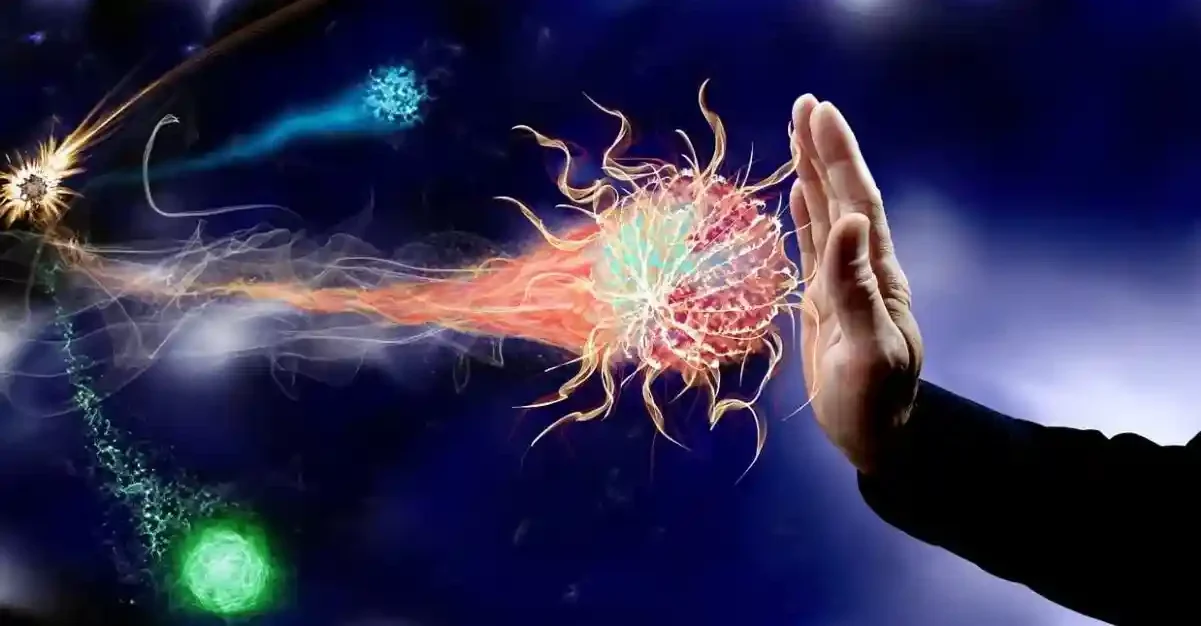
Tip #11 Remove toxins in your food, water and air
[su_quote cite=”Environmental Protection Agency” class=”my-block-quotes”]People exposed to toxic air pollutants at sufficient concentrations and durations may have an increased chance of getting cancer or experiencing other serious health effects. [/su_quote]
People exposed to toxic air pollutants at sufficient concentrations and durations may have an increased chance of getting cancer or experiencing other serious health effects.
Environmental Protection Agency
Remove toxins in your food, water and air
•Environmental pollution of air, water and soil with carcinogenic chemicals accounts for 1–4% of all cancers.
•Toxic air pollutants include benzene, which is found in gasoline.
•People are exposed by drinking water contaminated by toxic air pollutants.
•Canola oil is really rapeseed oil and can cause emphysema and respiratory distress, eventually leading to cancer.
•Toxins in water include dirt, bacteria and nutrients.
Environmental pollution
Environmental pollution of air, water and soil with carcinogenic chemicals accounts for 1–4% of all cancers (IARC/WHO, 2003). Exposure to carcinogenic chemicals in the environment can occur through drinking water or pollution of indoor and ambient air.
Exposure to carcinogens also occurs via the contamination of food by chemicals, such as aflatoxins or dioxins. Indoor air pollution from coal fires doubles the risk of lung cancer, particularly among non-smoking women (Smith, Mehta & Feuz, 2004). Worldwide, indoor air pollution from domestic coal fires is responsible for approximately 1.5% of all lung cancer deaths. Coal use in households is particularly widespread in Asia.
Source: World Health Organisation
About Air Toxics
Source: United States Environmental Protection Agency
What are toxic air pollutants?
Toxic air pollutants, also known as hazardous air pollutants, are those pollutants that are known or suspected to cause cancer or other serious health effects, such as reproductive effects or birth defects, or adverse environmental effects. Examples of toxic air pollutants include benzene, which is found in gasoline; perchloroethylene, which is emitted from some dry cleaning facilities; and methylene chloride, which is used as a solvent and paint stripper by a number of industries. Examples of other listed air toxics include dioxin, asbestos, toluene, and metals such as cadmium, mercury, chromium, and lead compounds.
What are the health and environmental effects of toxic air pollutants?
People exposed to toxic air pollutants at sufficient concentrations and durations may have an increased chance of getting cancer or experiencing other serious health effects. These health effects can include damage to the immune system, as well as neurological, reproductive (e.g., reduced fertility), developmental, respiratory and other health problems. In addition to exposure from breathing air toxics, some toxic air pollutants such as mercury can deposit onto soils or surface waters, where they are taken up by plants and ingested by animals and are eventually magnified up through the food chain. Like humans, animals may experience health problems if exposed to sufficient quantities of air toxics over time.
Where do toxic air pollutants come from?
Most air toxics originate from human-made sources, including mobile sources (e.g., cars, trucks, buses) and stationary sources (e.g., factories, refineries, power plants), as well as indoor sources (e.g., some building materials and cleaning solvents). Some air toxics are also released from natural sources such as volcanic eruptions and forest fires.
How are people exposed to air toxics?
People are exposed to toxic air pollutants in many ways that can pose health risks, such as by:
- Breathing contaminated air.
- Eating contaminated food products, such as fish from contaminated waters; meat, milk, or eggs from animals that fed on contaminated plants; and fruits and vegetables grown in contaminated soil on which air toxics have been deposited.
- Drinking water contaminated by toxic air pollutants.
- Ingesting contaminated soil. Young children are especially vulnerable because they often ingest soil from their hands or from objects they place in their mouths.
- Touching (making skin contact with) contaminated soil, dust, or water (for example, during recreational use of contaminated water bodies).
Once toxic air pollutants enter the body, some persistent toxic air pollutants accumulate in body tissues. Predators typically accumulate even greater pollutant concentrations than their contaminated prey. As a result, people and other animals at the top of the food chain who eat contaminated fish or meat are exposed to concentrations that are much higher than the concentrations in the water, air, or soil.
Toxins in food
Source: NaturalNews
1. Sodium Benzoate: This stealthy killer flies under most people’s radar, and is found in just about everything in jars and bottles, like salad dressing, pickles, sauces, mayonnaise, almost all soda and juice drinks, and even in foods labeled as “all natural.”
2. Canola Oil: This artificial, Canadian-exported GMO is super popular and is found in over 30% of all products. It chokes out your mitochondrial cells. Canola oil is really rapeseed oil and can cause emphysema and respiratory distress, eventually leading to cancer.
3. Monosodium Glutamate (MSG): The FDA allows 20 “pseudo” names for it including autolyzed yeast extract, free glutamate, glutamic acid, soy lecithin, calcium caseinate, hydrolyzed corn, hydrolyzed soy protein, and maltodextrin to name a few. Just because a product says “No MSG” doesn’t mean it’s not in there!
4. Sodium Nitrates (nitrosamines): Used for fertilizers and explosives, and as a solvent in the dry cleaning industry. This ingredient keeps hemoglobin molecules in your blood from carrying oxygen to your body tissues. It’s considered a “super salt” (like MSG) added to things like hot dogs, cold cuts and bacon for added shelf-life, color and flavor. Problems compound when microwaved.
5. Margarine: The body cannot incorporate trans-fatty acids into membranes, thus causing deformed cellular structures. Vegetable shortening and partially hydrogenated vegetable oils accelerate aging and degenerative changes in tissues.
6. Anti-foaming agents: (Dimethylpolysiloxane) An industrial chemical used in caulks and sealants. This component is mostly used in fast food chicken nuggets and eggs. Also watch for TBHQ, a petroleum derivative, used as a stabilizer in perfumes, resins, varnishes and oil field chemicals, and linked to stomach tumors and DNA damage.
7. Anti-caking agents: Chemicals that absorb moisture and prevent other compounds from sticking together. These are added to table salt and powdered food products. They are often composed of phosphate, carbonate, silicate and oxide compounds which contain aluminum. Watch for sodium alumino-silicate, alumino-calcium silicate and aluminium silicate. Aluminum is linked to Alzheimer’s and is also used in flu shots and vaccines.
8. Artificial colorings: Synthetic petrochemicals made from petroleum, antifreeze and ammonia. Blue #1 causes kidney tumors in mice. Red #2 and Blue #2 cause brain and bladder tumors in rats. Red #3 causes thyroid cancer in animals, and is banned in cosmetics, but still allowed in food. Red #40 debilitates the immune-system. Green #3 causes bladder and testes tumors. Yellow #5 and #6 cause adrenal tumors in animals.
9. Emulsifiers: Carrageenan, polysorbate 80 and brominated vegetable oil (BVO). These are stabilizing, smoothing and thickening agents. They are typically found in chocolate milk, cottage cheese, ice cream, infant formula and jelly. BVO remains in body fat for years. Polysorbate 80 is also found in most vaccines.
10. Artificial Sweeteners: Aspartame, Acesulfame K, Sucralose, Sorbitol, Truvia, and of course, Saccharin. Because they taste sweet, these chemical sweeteners trick the body into ingesting them and holding on to them for extended periods of time, turning rancid in the body fat. Fake sugars are the “Trojan horses” of the cell-choking and mutating, food agent industry. Sorbitol is also found in many vaccines.
Toxins in Water
Source: Environmental Protection Agency
Three Big Pollutants
Dirt
That’s right, dirt. Dirt was listed as the number one cause of pollution in our rivers and streams. When rain washes dirt into streams and rivers, it smothers the little critters in the stream and kills any fish eggs clinging to rocks. Dirt can also clog the gills of fish, suffocating them. Have you ever walked into a pond or lake and noticed huge swirls of muck rising up and clouding your view of the bottom? Well, if the plants that use the sun to make food (yes, that’s right, photosynthesis) can’t get enough sunlight because the water is murky, they die.
Where does all this dirt come from?
Most of the dirt washing into lakes and streams comes from activities that remove trees and shrubs and leave the earth exposed. This exposed earth includes fields that have just been plowed, construction sites that have been bulldozed, and areas that have been logged or mined. Bare patches in your lawn or ballfield can also contribute to the problem. Some of the dirt polluting streams comes from the stream banks. The problem is that fast-moving water erodes the banks of streams. The water moves faster because the vegetation that would slow it down has been replaced with pavement and buildings.
Bacteria
Bacteria are a big water quality problem in our nation’s waters. Not all bacteria are harmful (yogurt contains live bacteria cultures!), but the presence of some indicator bacteria is a clue that other germs and viruses that can make you sick might be in the water too.
Where do the bacteria come from?
The major sources of bacteria are combined sewers (which can overflow in a rainstorm and dump untreated sewage directly into our waters) and runoff of animal waste (including wild animal droppings!) from farmland and city streets.
Nutrients
Nutrients were listed as the number one cause of water quality pollution in our lakes, ponds, and reservoirs. They caused impairment in more than 3.8 million acres! (That’s more than 2.9 million football fields!) The two most common nutrients are nitrogen and phosphorus, which cause algae to grow and can turn the water green.
Where do nutrients come from?
The major sources of nutrients are runoff of fertilizers and animal waste from farms and cities (lawn fertilizers can wash away in heavy rain), sewage treatment plants, and failing septic systems.
Fluoride link to bone cancer
Source: Environmental Working Group
Fluoride is known to cause different types of genetic damage in mammalian cells, especially chromosomal aberrations (Zeiger 1993). Genetic toxicity of fluoride and its ability to stimulate active, uncontrolled division of bone cells have been long considered as potential contributors to carcinogenicity effects (NRC 2006). Three human epidemiological studies and two long-term animal studies found a link between fluoride and bone cancer (Bassin 2006; Cohn 1992; DHHS 1991; Maurer 1990; Maurer 1993; NTP 1990).
Page updated 2024
